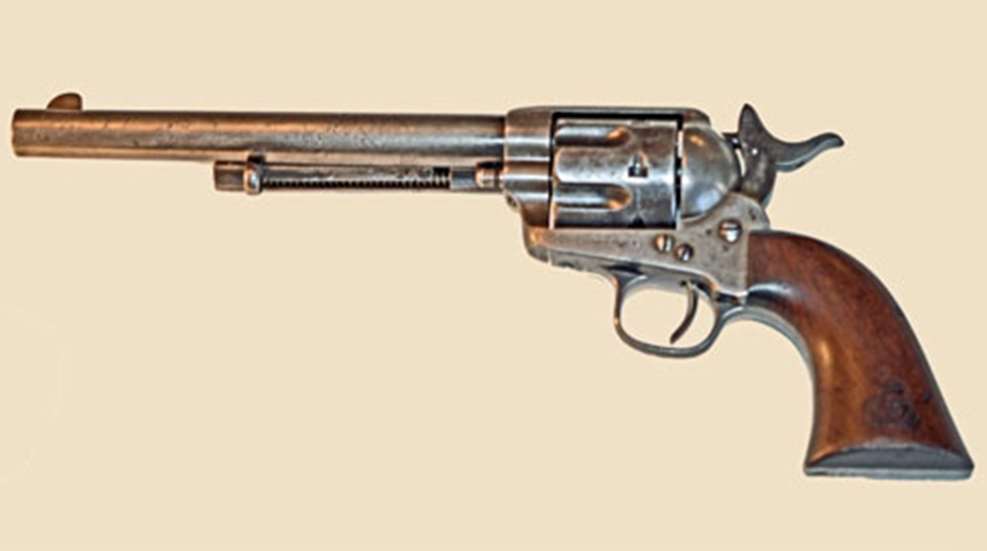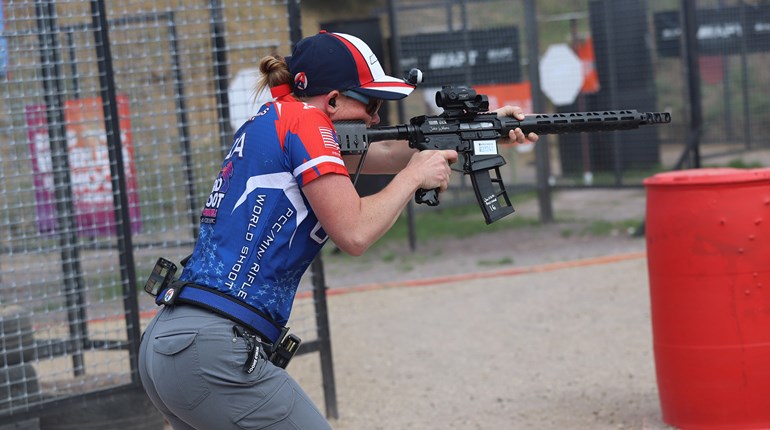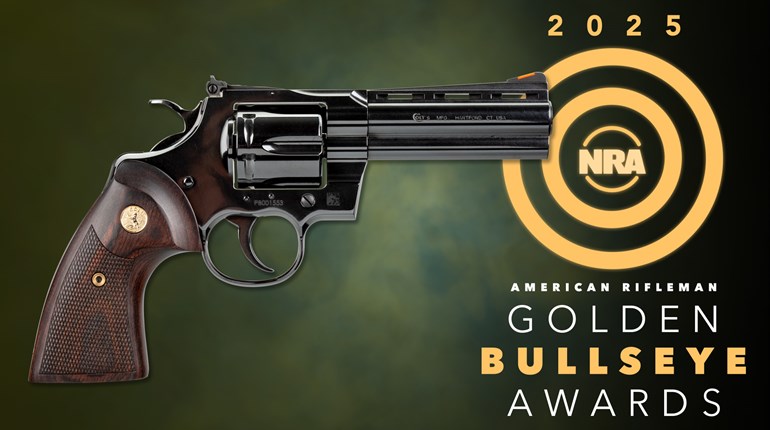
After all, there is a reason Army is a part of this six-shooter's nomenclature, as it was not only the first cartridge-firing revolver developed for the United States armed forces, it was also the Army's first .45-caliber sidearm. Moreover, the resultant .45 Colt chambering was responsible for inspiring John M. Browning, along with Colt engineers and General John Taliaferro Thompson, to develop the .45 ACP 38 years later. It is not coincidental these two cartridges are ballistically similar.
Interestingly, the "Colt New Model Army Metallic Cartridge Revolving Pistol," as the Single Action Army (SAA) was initially called, was originally a .44-caliber handgun, as the Army's official sidearm at the time was the .44-caliber Colt 1860 cap-and-ball revolver. Plus, the Ordnance Department had already given a cursory nod—without officially adopting it—to the Smith & Wesson Number 3 First Model (also known as the American) chambered in .44 Russian. But, adopting the philosophy bigger is better, the Army decided what it really wanted was a .45-caliber sidearm.
It turned out to be a fortuitous move for the SAA, as the .45 Colt cartridge provided the perfect combination of balance and firepower for the 2.5-pound, plow-handled gun with its 7.5-inch barrel. Packed with 40 grains of black powder behind a 255-grain round-nose lead bullet, which left the barrel at 810 fps, it proved to be a potent man-stopper with controllable recoil, a fact that became immediately apparent and appreciated during the Indian Wars.
However, the SAA had a major drawback for mounted troops—its cartridges had to be loaded and ejected one at a time, an operation that required two hands—difficult for a man astride a galloping horse. By contrast, the Smith & Wesson American, while requiring two hands to unlock the retaining latch so the barrel could swing down for loading and unloading, ejected all six cartridges at once. With an eye on the upcoming November 1872 Army field trials, a 10th U.S. Cavalry major general named George W. Schofield redesigned the Smith & Wesson No. 3 so its retaining latch could be operated with the thumb of the shooting hand, thus permitting the gun to be briskly flicked open. Over Colt's objections, the improved No. 3 Schofield was tested alongside the much more rugged and powerful SAA.
Officially, the SAA won the trials, and in 1873 was adopted as the Army's official sidearm, with an initial order for 8,000 guns. But in a unique act of diplomacy (after all, Gen. Schofield was one of their own), in 1874 the Army also ordered 3,000 No. 3 Schofields, with the stipulation they be chambered in the government's new .45 caliber. However, the No. 3 cylinder was too short to chamber the .45 Colt cartridge, and the extractor was too wide to engage the rim for ejection.
Consequently, Dan Wesson, who co-founded Smith & Wesson, came up with a new cartridge, the .45 S&W (or S&W Schofield), which was basically a shortened version of the .45 Colt. It was also less powerful, due to the decreased powder capacity of the case. To avoid confusion between the two rounds, the .45 Colt was referred to as the .45 Long Colt, a term that occasionally finds its way into print today. In all, from 1873 until 1892, when the SAA was replaced with the 1892 Colt Army and Navy Model double-action .38-caliber revolvers, a total of 8,000 Smith & Wesson Schofields were purchased by the Army. By contrast, during this same period, 39,063 SAAs were ordered by the government.
Today, martially marked SAAs are some of the most coveted handguns among collectors, and although numerous counterfeits abound, there are some basic features all these guns share. All issued SAAs have "U.S." stamped on the left side of the frame, along with either two- or three-line patent dates. The guns also feature a bone charcoal case-hardened frame and hammer, with a charcoal blued-steel backstrap, trigger guard, ejector housing and barrel. However, the base pin, screws, and trigger were finished in a duller nitre blue. Up until 1876—around serial number 22,000—address stampings across the top of the barrels were in italics. After that, they changed to block letters.
One-piece walnut grips were stamped with the inspector's cartouche—one of the most desirable being OWA, for Orville Wood Ainsworth—the earliest ordnance sub-inspector at the Colt factory (from October 1873 to November 1874). Another desirable cartouche is that of HN, for Henry Nettleton, the Springfield Armory's principal sub-inspector in 1878. The DFC cartouche of David F. Clark is found on the largest numbers of U.S. Colt revolvers, dating from 1880 to 1887.
According to John Kopec and H. Sterling Fenn in their book, "Colt Cavalry & Artillery Revolvers…A Continuing Study," the first 2,000 SAAs were shipped on Dec. 22, 1873, to Leavenworth, KS, and subsequently issued to the 10th and the 6th Cavalries. As an aside, 755 single-actions were shipped to the 7th Cavalry two years before Custer's defeat at the Battle of the Little Big Horn, although Custer carried a Smith & Wesson Schofield in this fatal skirmish.
Many of these martial Colts saw additional action in the Spanish-American War and during the Philippine Insurrection, when numerous mothballed SAAs were reconditioned and reissued with their 7.5-inch barrels trimmed to 5.5 inches.
The SAA even had a role in World War II, when many were sent to England and other Allies under the Lend-Lease program. Nor can we forget Gen. George S. Patton packing his engraved, silver-plated and ivory-stocked SAA from his Pancho Villa-chasing days to the battlefields of World War II. Interestingly, it was chambered in .45 Colt, not .45 ACP.
Although we tend to think of the SAA blazing its way through the western frontier, America's first .45 played an equally important role as a gun that fought for freedom on more than one continent.



































